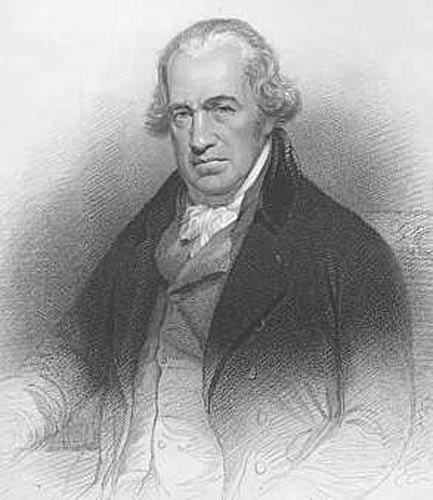1.3: Temperature
- Page ID
- 84290
Another important variable that describes the state of a system it the system’s temperature. Like pressure, temperature scales experienced an important process of development over time. Three of the most important temperature scales in US culture are the Fahrenheit, Celsius, and Kelvin scales.


G. Daniel Fahrenheit wanted to develop a temperature scale that would be convenient to use in his laboratory. He wanted it to be of convenient magnitude and wanted to avoid having to use any negative values for temperature. So he define the zero of his temperature scale to be the lowest temperature he could create in his laboratory, which was in a saturated brine/water/ice slurry. He then defined 100 °F as his own body temperature. As a result, using his temperature scale, water has a normal melting point (the temperature at 1.00 atm pressure at which water ice melts) of 32 °F. Similarly, water boils (again at 1 atm pressure) at a temperature of 212 °F. The difference between these values is 180 °F.
Anders Celsius also thought a 100 degree temperature scale made sense, and was given the name “the centigrade scale”. He defined 0 °C on his scale as the normal boiling point of water, and 100 °C as the normal freezing point. By today’s standards, this inverted temperature scale makes little sense. The modern Celsius temperature scale defines 0 °C as the normal freezing point of water and 100 °C as the normal boiling point. The difference is 100 °C. Comparing this to the Fahrenheit scale, one can easily construct a simple equation to convert between the two scales.
\[ 212\, °F = 100\, °C(m) + b \nonumber \]
\[32 °F = 0 \,°C (m) + b \nonumber \]
Solving these equations for \(m\) and \(b\) yields
\[ m= \dfrac{9 \, °F}{5\, °C} \nonumber \]
\[b= 32\,°F \nonumber \]
And so conversion between the two scales is fairly simple.
\[ y\, °F = x\, \cancel{°C} \left( \dfrac{9 \, °F}{5\, \cancel{°C}} \right) + 32\,°F \nonumber \]
\[x\,°C = (y \, \cancel{°F} - 32 \cancel{°F}) \left( \dfrac{5 \, °C}{9\,\cancel{ °F}} \right) \nonumber \]
Many physical properties of matter suggest that there is an absolute minimum temperature that can be attained by any sample. This minimum temperature can be shown by several types or experiments to be -273.15 °C. An absolute temperature scale is one that assigns the minimum temperature a value of 0. One particularly useful scale is named after William Lord Kelvin (Kelvin, Lord William Thomson (1824-1907) , 2007).

The Kelvin scale fixes the normal melting temperature of water at 273.15 K and the boiling point at 373.15 K. As such, temperatures can be converted using the following expression:
\[ z\, K = x\, \cancel{°C} \left( \dfrac{1 \, K}{1\, \cancel{°C}} \right) + 273.15 \,K \nonumber \]


